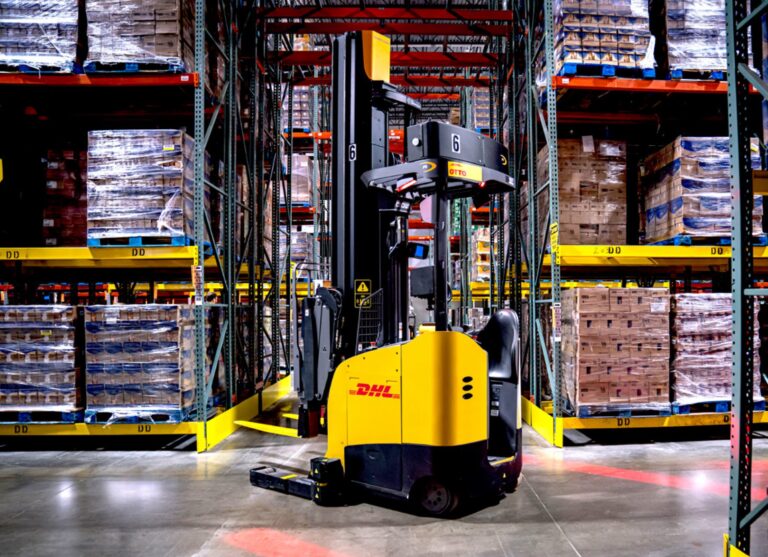DHL Supply Chain, the contract logistics arm of Deutsche Post DHL Group, is further accelerating the commercial deployment of autonomous forklifts and pallet movers in its more than 1,500 warehouses worldwide, focusing on sites in labour-tight markets across Europe, the UK, Ireland and North America.
Autonomous pallet movers can handle both horizontal and vertical movements of palletised goods, making them especially useful in sectors such as consumer, retail or automotive that are characterised by full-pallet handling. The deployment is part of DHL Supply Chain’s Accelerated Digitalization’ agenda, a strategy for commercialising and scaling innovative solutions and new technologies.
“Effective robotic support of our warehouse employees is not limited to the piece-picking processes at our booming e-commerce and fulfilment sites,” noted Markus Voss, Global CIO & COO at DHL Supply Chain. “Autonomous pallet movers can support service quality and operational excellence in many ways. One of the main advantages of these indoor robotic transport devices is that they add immediate benefits to our operations and can theoretically be deployed in all of our pallet-handling operations. All told, our sites see millions of pallet movements every day. Not only do these processes require technical assets – forklifts or pallet movers, they also tie up substantial workforce capacity that we could deploy more effectively elsewhere, especially in labor-tight markets. We estimate that up to 30% of our global material-handling equipment fleet will use some form of robotic automation by 2030.”
Autonomous forklifts take over the picking, put-away and replenishment of full pallets in warehouses, reducing the number of manual pallet transfers without requiring significant changes in warehouse infrastructure. Such forklifts can easily reach DHL’s highest warehousing racks at heights of more than 10 meters and can handle all kinds of pallets, stillages and other unit load storage equipment.
In their currently deployed configurations, the robotic units achieve 65% of human productivity and move 10 to 15 pallets per hour while safely manoeuvring alongside warehouse employees and traditional materials handling equipment. Such forms of hybrid work involving the collaboration of humans and robots can be especially helpful in markets seeing booming or highly volatile logistics activities, as well as in regions that are temporarily suffering shortages of qualified workers.
With 24/7 operation, DHL calculates that a fleet of just a dozen of these autonomous forklifts can handle more than a million pallets per year in just one facility. Automated indoor robotic transport increases efficiency and improves workplace safety by taking over the repetitive task of driving pallets around. Improvements of this kind help DHL Supply Chain to further increase operational excellence for its customers while making its operations more effective.







